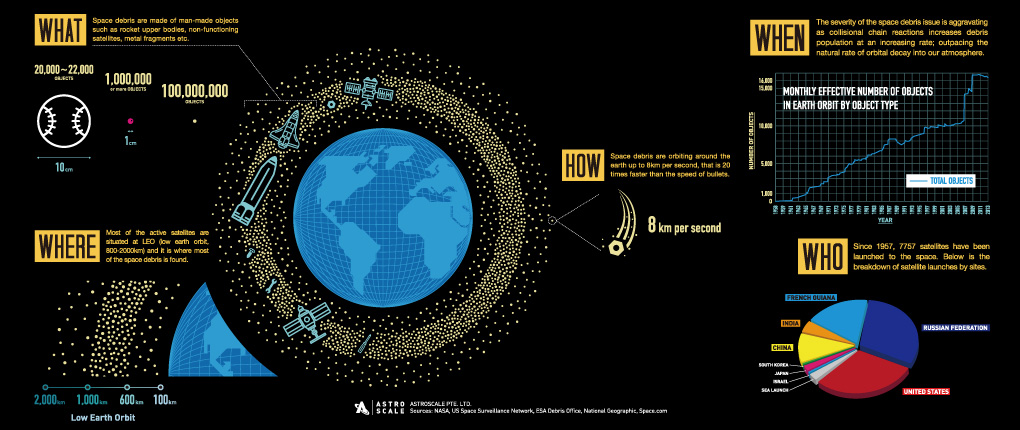1.Space Debris

Space debris is made of man-made objects such as rocket upper bodies, non-functioning satellites, metal fragments, etc. It is a general term that refers to failed space objects, as well as to debris resulting from explosions and collisions. Including small objects under 10 cm in size, there are an estimated 5.8 trillion pieces of debris currently being tracked from the ground in orbit around the earth.
More than 50 years have passed since humanity first began exploration of space. Within that time, thousands of launches have taken place, carrying several thousand tons of satellites and rockets into space. Spacecraft that have outlived their purpose or failed, parts that have been released during missions, and fragments resulting from over 200 explosions in space mean that there is currently an enormous amount of garbage orbiting around the earth.
Most of the active satellites are situated at LEO (low earth orbit) region, and it is where most of the space debris is found. Space debris travels at incredibly high speeds in excess of 7 km per second, and can cause severe damage upon collision with satellites and space stations. Collisions are actually already occurring, such as the incident between the Kosmos 2251 (Russian Strela-2M communications satellite) and the Iridium33 (U.S. communications satellite) on February 10, 2009. The current risk of debris collision is an issue becoming increasingly difficult to ignore.
